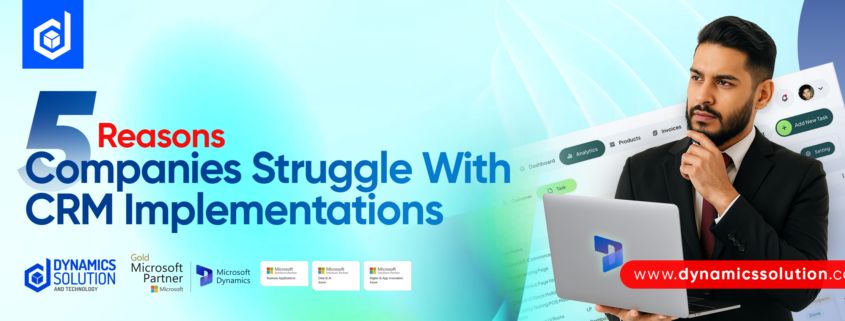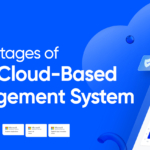Implementing a Customer Relationship Management (CRM) system should be a game-changer for any organization. It promises better customer insights, improved sales tracking and smoother internal collaboration. Yet, the reality is more complicated.
According to a study, 63% of CRM initiatives fail. That’s not just a statistic, it’s a red flag for companies investing significant time, money and effort into a system that’s supposed to boost growth and efficiency.
Why is this happening? It’s rarely the software’s fault. Tools like Microsoft Dynamics 365 are incredibly powerful when used right. The real problems are deeper and fixable. Most CRM failures stem from misalignment between business goals, internal processes and user needs, not from the platform itself.
In this blog, we’ll dig into the five biggest reasons CRM implementations fall apart, walk through practical solutions for each and show how you can avoid these pitfalls in your own organization.
Let’s start with a quick look at what a CRM should be doing when it’s set up for success.
What Can CRM Actually Do for a Business?
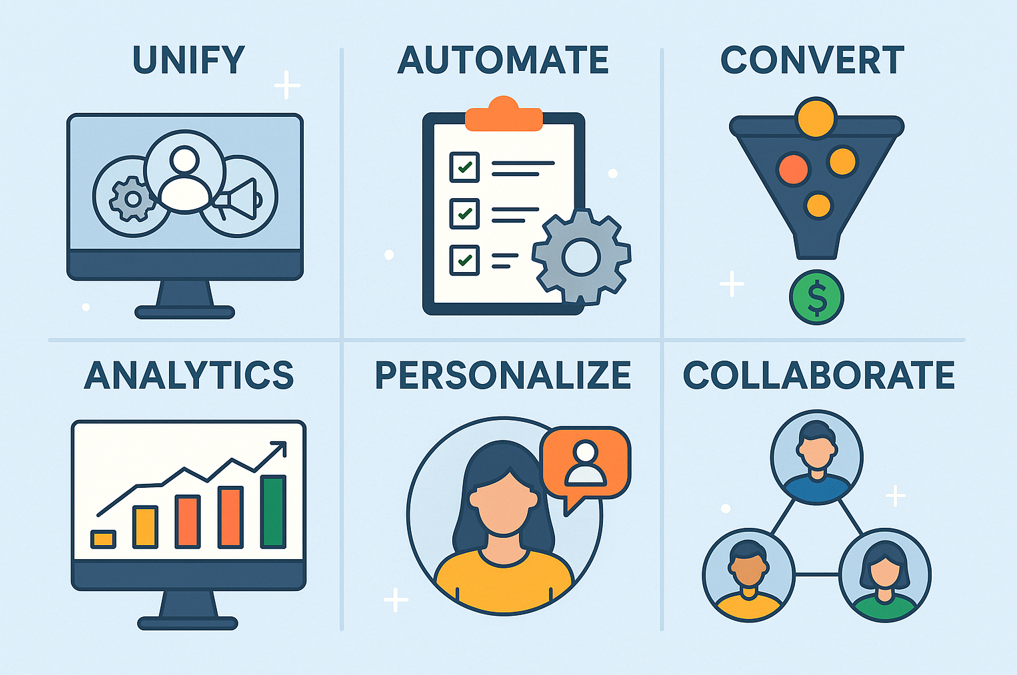
Before talking about why CRM systems fail, let’s be clear on what a well-implemented CRM should actually do. When correctly rolled out and adopted, a CRM can:
- Unify customer data across sales, service, and marketing
- Automate repetitive tasks and workflows
- Improve lead nurturing and conversion rates
- Provide real-time analytics and forecasting
- Personalize customer experiences
- Help teams collaborate more efficiently
Microsoft Dynamics 365, for example, combines CRM and ERP capabilities, giving businesses a single platform to manage customer relationships and internal operations. When it works, it’s a game changer. But when it doesn’t, it often boils down to the issues below.
The Problems That Derail CRM Implementations
1. Lack of Clear Business Objectives
One of the most common reasons CRM projects fall short is that the system is rolled out without a clear connection to actual business priorities. Leadership may push for a CRM because it’s “what everyone’s doing,” but if the system isn’t tied to specific outcomes, like shortening the sales cycle or improving customer retention, it ends up as a glorified contact list.
Why it matters: A CRM should support measurable goals. If your sales team is struggling to close leads or your support representatives need better case tracking, your CRM strategy should directly address those gaps.
2. Failure to Involve Key Stakeholders Early
CRM systems are often selected and configured by IT or senior executives, while the people who’ll actually use the tool, like sales representatives, marketers and customer service agents are left out of the process. That creates a disconnect between how the CRM is designed and how it’s actually used on the ground.
Why it matters: If the CRM doesn’t fit daily workflows, teams won’t adopt it. And if they don’t use it, it won’t deliver results. Engaging users early helps ensure the system is practical, intuitive, and tailored to real needs.
3. Underestimating the Complexity of Data Migration
Many companies assume that migrating data from legacy systems to a new CRM will be simple. It rarely is. Legacy data tends to be messy; filled with duplicates, outdated contacts, inconsistent formats and irrelevant fields. If this unorganized data is dumped into a new CRM, it can ruin reporting, confuse users and damage customer interactions.
Why it matters: Clean data is the foundation of CRM success. Without it, automation fails, sales forecasting becomes unreliable, and customer insights are skewed. Data preparation should be treated as a project of its own, not an afterthought.
4. Poor Training and Change Management
Even the best CRM can’t help if people don’t know how to use it or if they see it as just “another system.” Teams are often handed a new tool with minimal training and then expected to change habits overnight. That rarely works.
Why it matters: Adoption isn’t just about functionality, it’s about behavior. Effective change management includes tailored training, role-based onboarding and ongoing support to help users embrace the new system with confidence.
5. Overcomplicating the Minimum Viable Product (MVP)
One of the biggest mistakes companies make with CRM is trying to do everything at once. Instead of starting with a simple version of the system that covers the basics, they try to launch every possible feature from the beginning, custom workflows, detailed reports and integrations with other tools and more. This often leads to delays, confusion and a system that feels too heavy to use.
A better approach is to start small with a Minimum Viable Product (MVP)—a version of the CRM that solves your most urgent problems. Maybe that’s basic contact tracking, lead management or simple task reminders. Once people are comfortable and seeing results, you can add more features gradually.
Sometimes, companies also make the CRM more complicated than it needs to be by customizing everything. While it’s important to tailor the system to your needs, doing too much too soon can make it harder to manage and more expensive to maintain.
Why it matters: Keeping things simple in the beginning makes it easier for your team to learn and use the system. It also helps you get results faster. You don’t need everything on day one, just the parts that matter most. From there, you can build and grow without overwhelming your team or your budget.
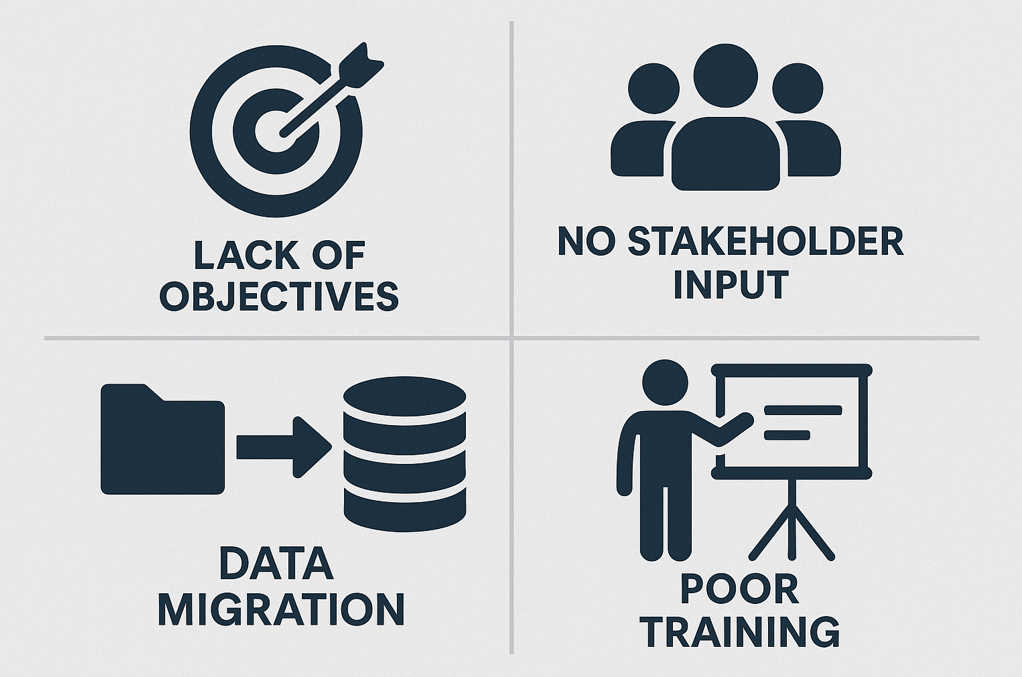
How to Turn a CRM Into a Strategic Asset
Let’s break down each of those problems and look at how to solve them, with strategies that work in real organizations.
1. Define Business Objectives from the Start
Instead of vague intentions like “improve customer management,” define 2–3 specific, measurable goals for the CRM. For example:
- Increase lead conversion rates by 15% in 6 months.
- Reduce customer churn by 20% year over year.
- Automate 80% of repetitive tasks in the sales pipeline.
These goals should come from leadership but be informed by frontline staff.
2. Build for the User, Not Just the Admin
If the people using the CRM daily don’t like it, it will fail, regardless of how advanced the backend is.
Here’s how to fix that:
- Run workshops with end-users before configuration begins.
- Customize dashboards and layouts by role (sales vs. support vs. marketing).
- Provide hands-on training based on real scenarios.
- Roll out in phases, not all at once.
3. Clean Your Data Before You Migrate It
One of the most common causes of CRM failure is unfiltered and organized data. If your old database is filled with outdated contacts, duplicates or inconsistent formatting, it will pollute your new system from day one.
Steps to take:
- Perform a data audit before migration.
- Remove duplicates and inactive records.
- Standardize naming conventions and formatting.
- Set data validation rules for new entries.
Dynamics 365 supports AI-powered tools that can help with data cleansing—when configured correctly.
4. Configure, Don’t Over-Customize
Custom features feel helpful in the short term but often become liabilities over time. Custom code is harder to update, more expensive to maintain and can break integrations.
Instead:
- Use low-code/no-code configuration wherever possible.
- Stick with native Dynamics 365 features and modules.
- Only customize where it directly ties to a business need.
- Always document custom logic and changes.
5. Build a Governance Plan for Post-Go-Live
A CRM isn’t something you launch and walk away from. It needs care, feedback, and updates to stay useful.
Create a governance structure that includes:
- A CRM admin or owner
- A quarterly feedback loop
- Regular training refreshers
- Ongoing performance tracking with dashboards
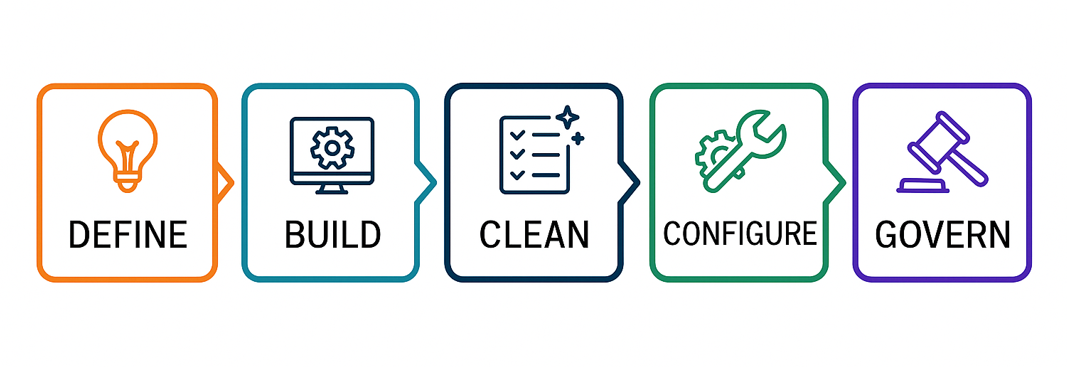
Why Businesses Trust Dynamics Solution and Technology for CRM That Delivers
At Dynamics Solution and Technology, we don’t just implement CRM systems, we make sure they work for your people, your goals and your long-term growth. Here’s how we do it differently:
- Focus on business outcomes first – Every project starts with a clear definition of success, then we build the system to support that.
- Tailor it to real users – Whether it’s your sales reps or support team, we design the CRM to fit how your team’s work.
- Clean and structure your data – From audits to AI tools, we make sure your CRM starts with clean, useful information.
- Roll out in manageable phases – You get results faster, your team isn’t overwhelmed, and adoption improves naturally.
- Stick around post-launch – With ongoing support, reporting help, and regular reviews, we’re in it for the long haul.
Ready to implement a CRM that actually works? Let’s talk about how we can help you build, launch and grow a CRM system that fits your business, not just your software.

